A two-day BioBlitz was held in and around the University of Salford’s Peel Park campus in March as part of our Go Green Salford activities. To to find out more about our Go Green Salford campaign, check out our blog post here. Here is a more in depth look at what we got up to!
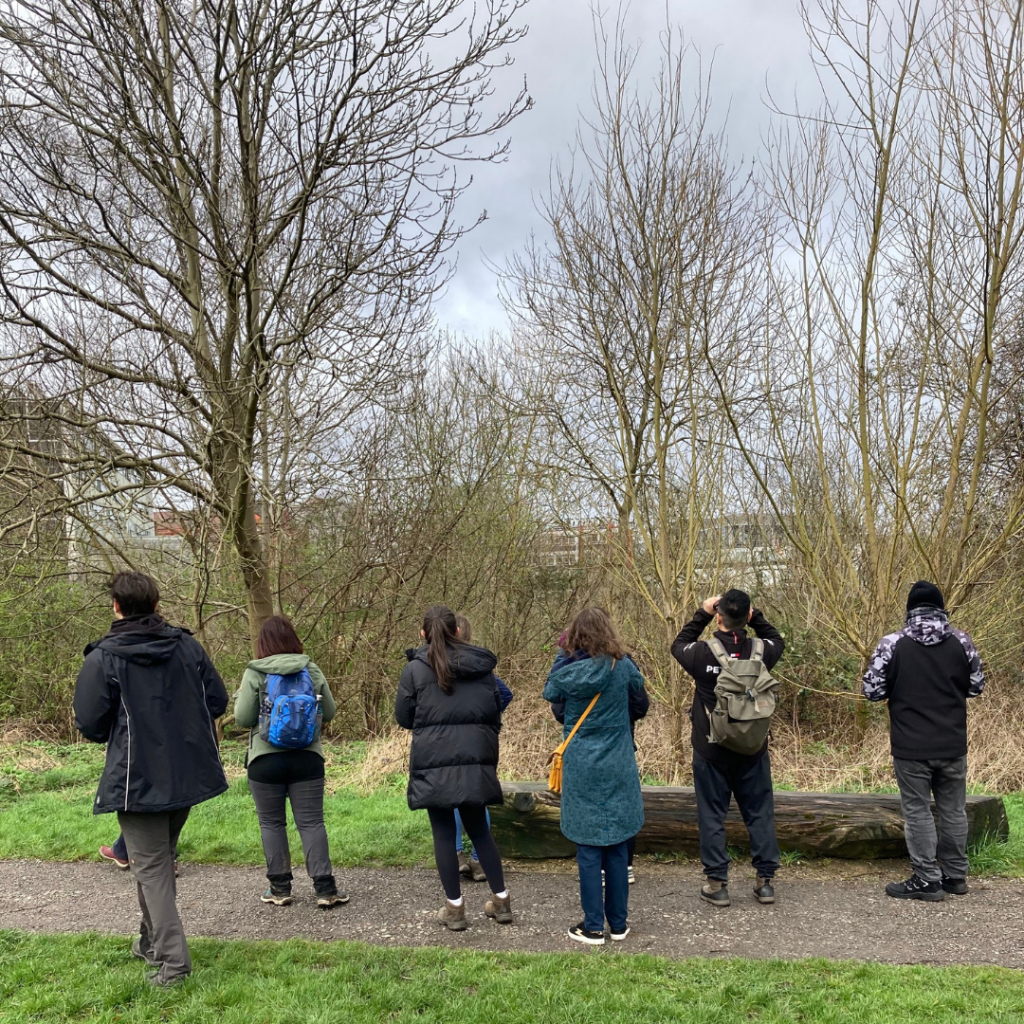

What is a BioBlitz?
A bioblitz is a usually a period of 24 hours where different plants and animals are monitored within a certain area. Bioblitz activities can involve:
- Bat Walks
- Bird Walks
- Small Mammal Trapping
- Amphibian Identification
- Bee Activities
This BioBlitz was run by Salford Rangers who will report the data back to the Manchester Ecology Unit who will use the data in their records. The data will also be used to inform decisions made about future land use, and whether any building will cause habitat disruption. Salford Rangers will also use the information to inform their 5-year management plan.
Who takes part in a BioBlitz?
Anyone can! A BioBlitz may be led by a team of volunteer scientists, but anyone can get involved. The aim of a BioBlitz can often be to engage the community, volunteers and the public in better understanding and getting involved with their local green spaces.
Go Green Salford 2024 BioBlitz:
Day 1:
9am-10am: Bird Walk with Dr Helen Whitehead
This morning’s bird walk around Peel Park and The Meadow identified 17 different species of birds including, blue tits, robins, mallards, cormorants, and Canada geese. Attendees learnt top tips on how to identify birds by birdsong, for example we learnt that the bird call of a chiffchaff sounds like someone saying its name, a short two syllable call.

10:30am-12:30pm: Spring Wildlife with Dave Winnard
Despite experiencing some rain, the spring wildlife walk looked at the animals and flora in Peel Park and The Meadow. Our guide Dave Winnard shared lots of interesting facts, including the origin of the word dandelion which comes from the French phrase ‘Dant- de-lion’ meaning ‘lions teeth’ which refers to the sharp looking leaves that come from the plant. This walk allowed Salford Rangers to identify 30 different animals and flora.
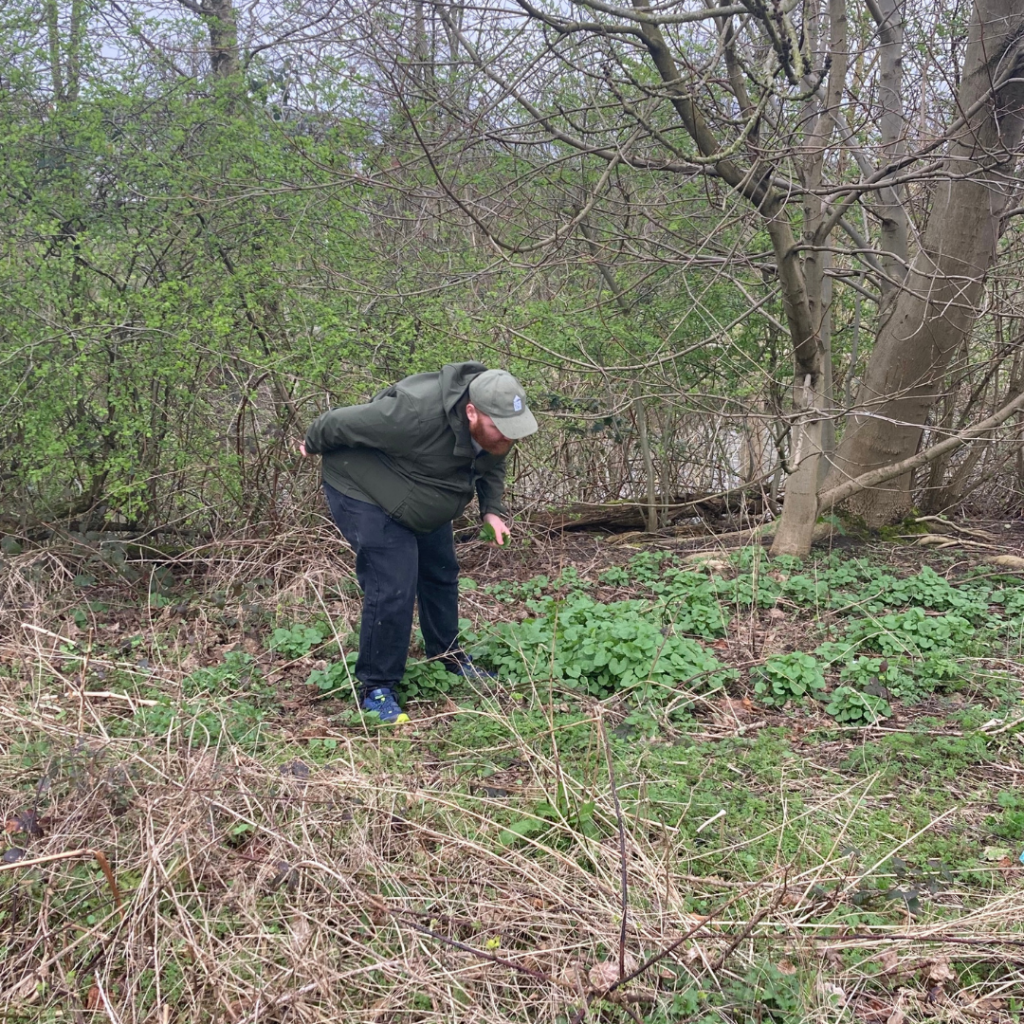
1:30pm-2:30pm: Amphibian Identification with Dr Robert Jehle
A well attended amphibian talk saw Robert Jehle show participants a frog, a smooth newt, and a palmate newt, as well as a collection of tadpoles that he had found that morning in The Meadows. Seeing the amphibians helped participants to understand more about how many species there are of each of them in the UK, how to identify each one, and why it is important to protect the habitats that these animals are found in. Did you know that there are only two types of frogs that are native to the UK?

3:00pm-4:00pm: Bee Talk and Identification Workshop with Laura Clavin
A former University of Salford Student shared her bee expertise with a group of participants. There was firstly a short lecture on the different types of bees found in the UK, what sort of climates they prefer and how to identify the different types of bees. From this lecture participants learnt that bees don’t like to come out in temperatures lower than 10°C or in windy or wet conditions. Unfortunately, at this time, temperatures had dropped to 9°C and the wind conditions had picked up, which meant that only one bee was spotted in Peel Park. The bee that we did find was found to be a British Garden Bee. Attendees also learnt that the best colour flower to attract bees to a space is purple, this is because this is the colour that bees can see most vividly.
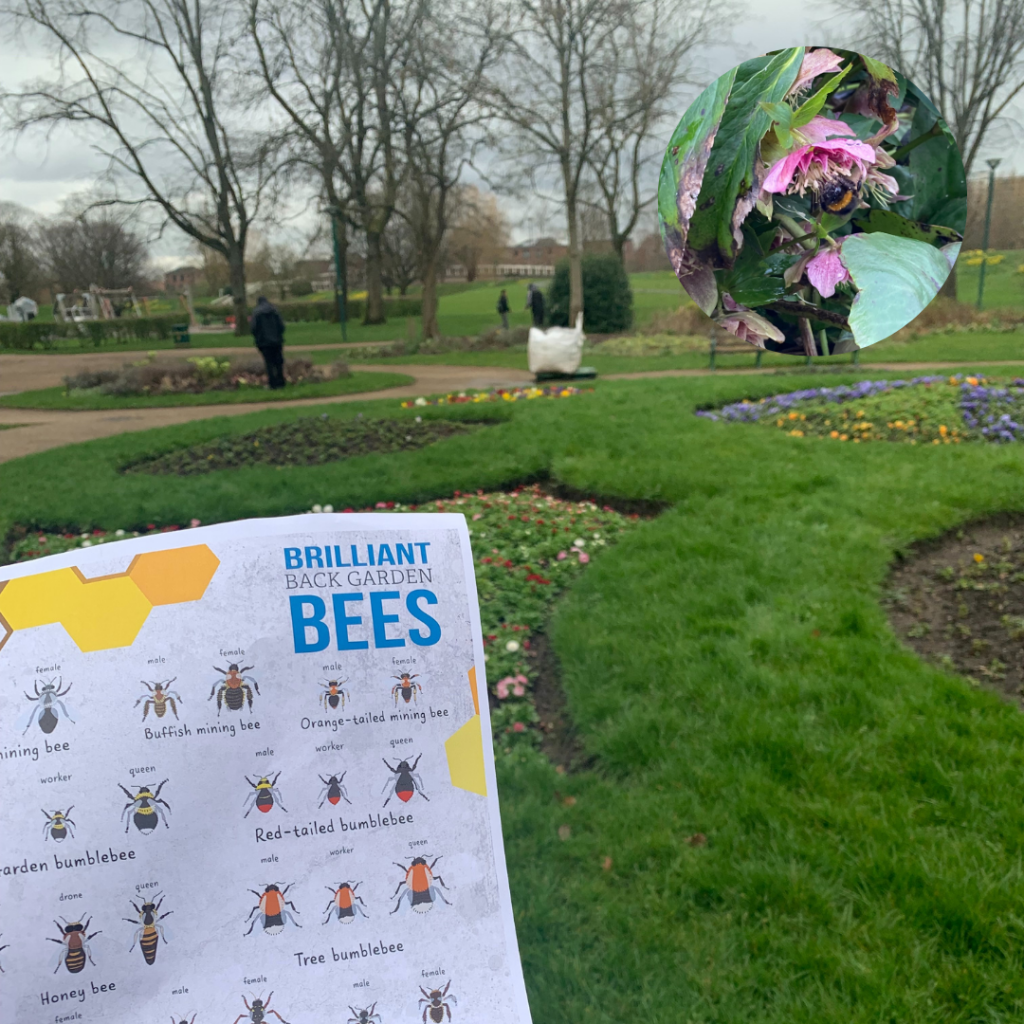
4:30pm-5:30pm: Small Mammal Trapping & Identification Workshop with Salford Rangers
Small mammal traps were set out in The Meadows to try and understand what sort of wildlife uses the space at night. The traps are lined with bedding, foods such as oats and seeds, and pieces of apples for moisture. 30 traps were set out in the amongst the brambles and below the cover of the canopy of the trees.
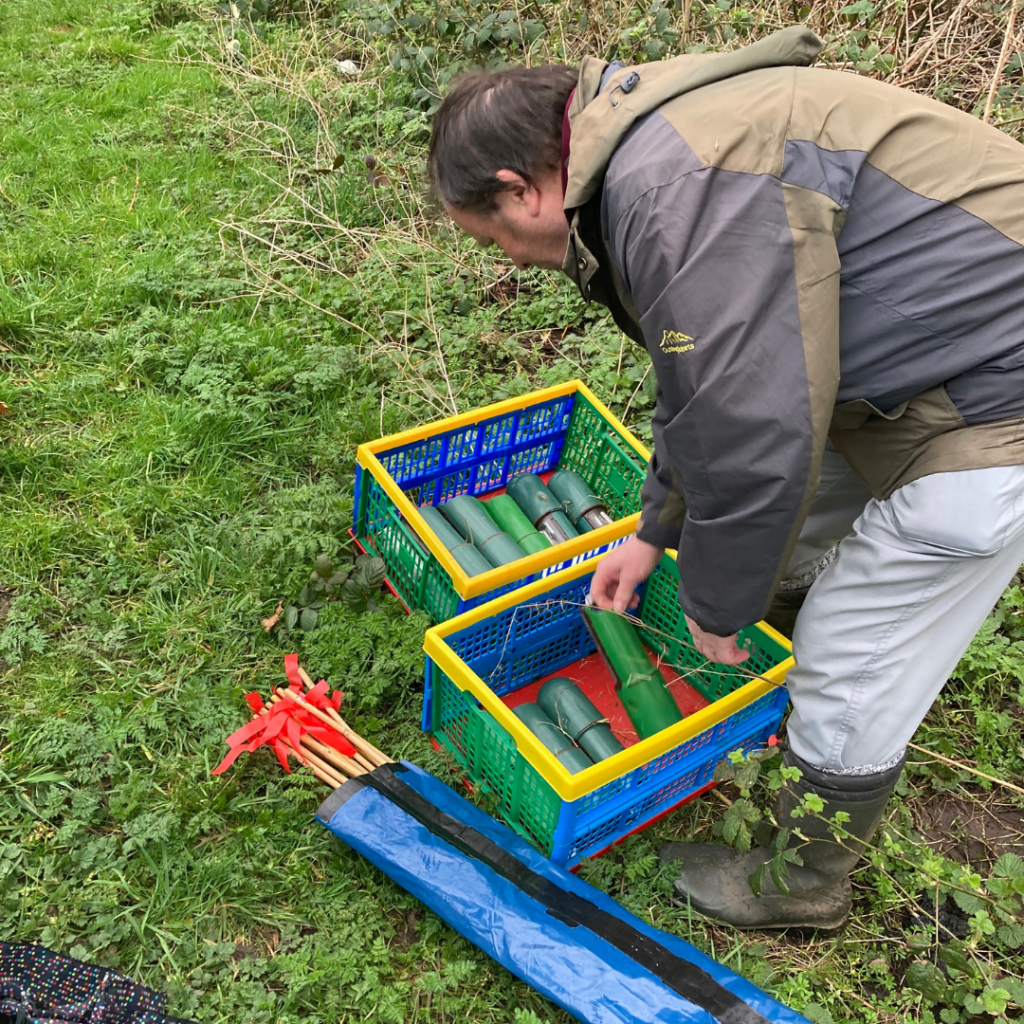
6:00pm-8:00pm: Guided Bat Walk with Christopher Meyer
On the bat walk, three types of bats were detected, the common pipistrelle, the soprano pipistrelle and the noctule bat. Attendees checked along the river Irwell, and near the Ranger Base as bats are known to frequent the tree lines around here.
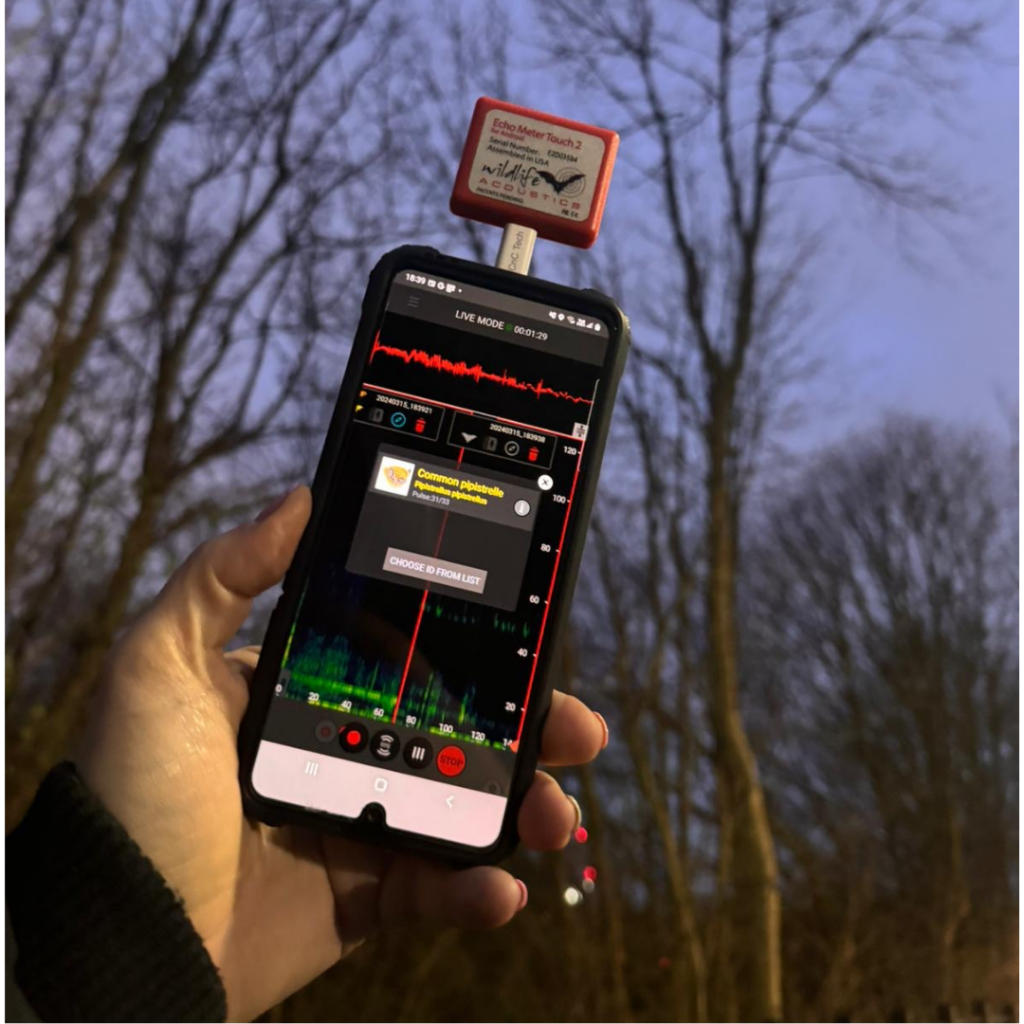
Day 2:
8:00am-9:30am: Opening the Mammal Traps with Salford Rangers
Opening the mammal traps revealed that 20 wood mice had entered overnight, and some were reluctant to come out, due to the warm conditions. They were then set free to roam the meadows.

10:00am-12:00: Bird Walk with David Winnard
The talk began in Peel Park and went along the Riverbank, participants were identifying waterfowl, mallards, Canada geese and cormorants. They then headed over to The Meadows to hear the calls of chiffchaffs, blue tits, green finches, black headed gulls, and wrens. They also found the nest of a gold finch in a small tree and watched on as long tailed tits collected materials for their nests. Along the river it was also identified that there is a roosting nest of cormorants, with an estimated 20 birds living there.

1:00pm-3pm: Spring Foraging Walk with David Winnard
Our spring foraging session helped to identify a multitude of greenery on campus, many of which are inedible:
- Wild garlic
- Cleavers
- Elderflowers
- Bittercress
- Lesser celandine
- Lavender
- Glistening Ink caps (mushrooms)
- Morel
- Cow parsley
- Garlic mustard
- Hawthorne
- Ground elder
- Cults foots
- Turkey tail
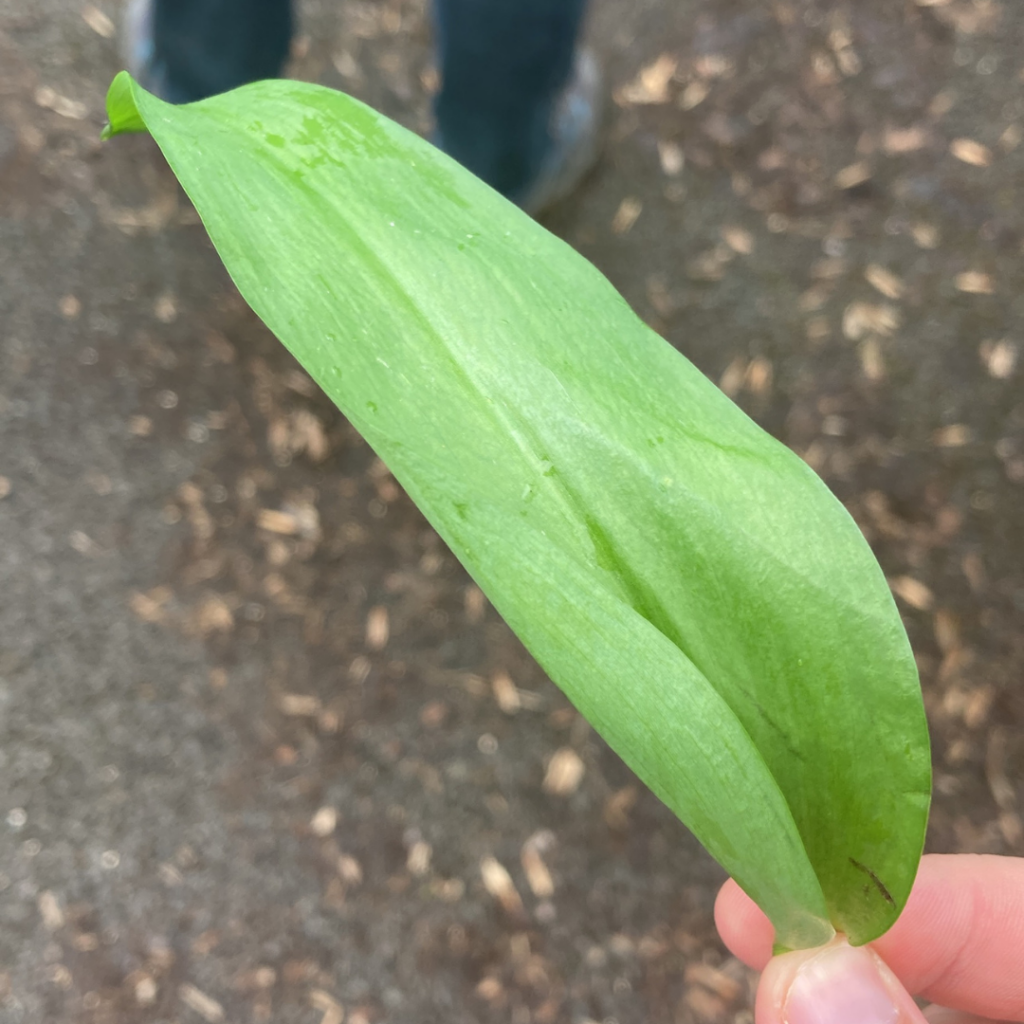
Thank you to everyone who came and took part in our BioBlitz, we were able to collect some extremely valuable data, with 71 species being identified. It was great to see so many people engaging and out enjoying the natural environment that Salford has to offer! To keep up to date with what the Sustainability team is up to follow us on our socials media channels:
- Instagram: @uos_sustain
- Twitter: @UoS_Sustain
- Facebook: Environment & Sustainability Team: University of Salford
Written by Elena Fox, Sustainability Campaigns/Communications Intern